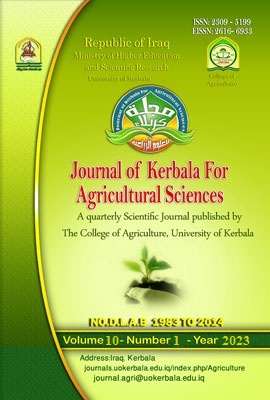Abstract
The infection of insects with symbiotic bacteria has significant impli-cations for the evolution and ecology of the hosts. Maternally inherit-ed symbionts associated with B. tabaci and T. vaporariorum white-flies play a vital role in their fitness and survival. Whitefly symbionts have been identified in many countries, but no study has been under-taken in Iraq and the UK. For the first time in both countries, the mo-lecular identification and diversity of the symbionts of both white-flies have been investigated in the present study Fourteen popula-tions of B. tabaci from Iraq and twenty populations of T. vaporario-rum from the UK were used to detect and identify seven common endosymbiont bacteria associated with whitefly using the 16S rRNA and 23S rRNA nuclear markers. All females and males of B. tabaci harboured one primary symbiont, Portiera aleyrodidarum, and almost all of both sexes of all B. tabaci species have the two secondary sym-bionts Hamiltonella sp. and Rickettsia sp. The primary symbiont P. aleyrodidarum was also detected in both sexes of T. vaporariorum, whereas only one secondary symbiont, Arsenophonus sp., was de-tected in almost all females but not in the males. Additionally, an in-vestigation into genetic diversity using three genes of the Ar-senophonus sp. populations showed no variation among different populations. The results supported the notion that Arsenophonus sp. might play an important role in the survival of T. vaporariorum fe-males and maybe a killer of male whiteflies. Also, secondary symbi-onts Hamiltonella sp. and Rickettsia sp. with B. tabaci could support their host’s fitness and survival These findings reveal the endosym-bionts associated with B. tabaci and T. vaporariorum in Iraq and the UK, respectively. Further investigation is needed to understand the roles of these symbionts in both countries.
Keywords
16S rRNA and 23S rRNA
Bemisia tabaci
endosymbi-ont bacteria
Trialeurodes vaporariorum
